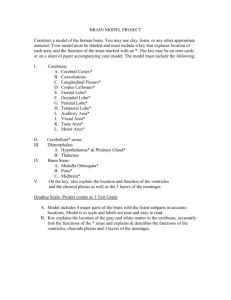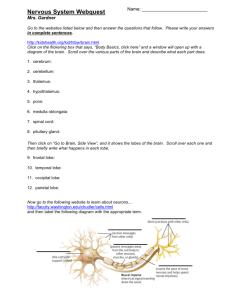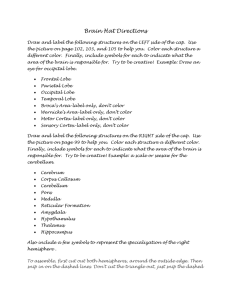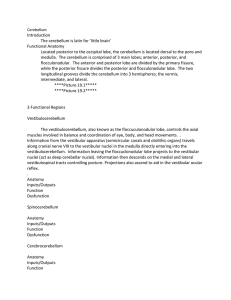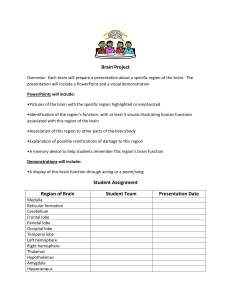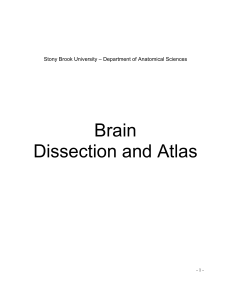REPORT ON THE NEMERTEA. 81 It is certainly all the more
advertisement
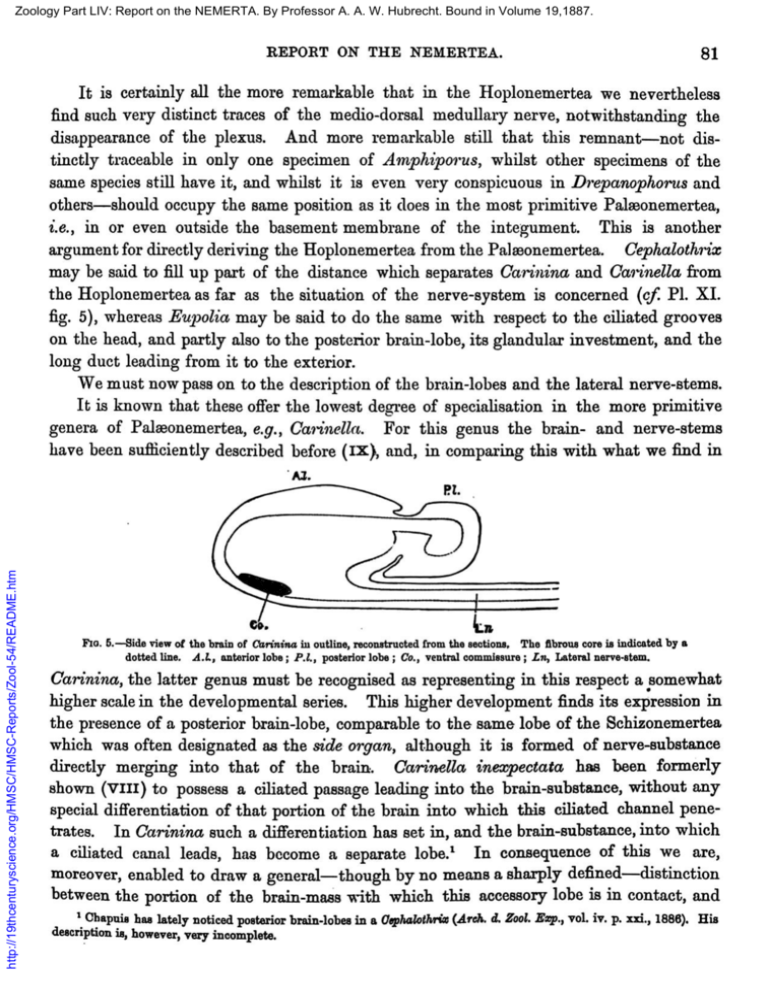
Zoology Part LIV: Report on the NEMERTA. By Professor A. A. W. Hubrecht. Bound in Volume 19,1887. REPORT ON THE NEMERTEA. 81 It is certainly all the more remarkable that in the Hoplonemertea we nevertheless find such very distinct traces of the medio-dorsal medullary nerve, notwithstanding the And more remarkable still that this remnant-not dis disappearance of the plexus. tinctly traceable in only one specimen of Ainphiporus, whilst other specimens of the same species still have it, and whilst it is even very conspicuous in Drepanophonts and others-should occupy the same position as it does in the most primitive Pa]ionemertea, This is another i.e., in or even outside the basement membrane of the integument. Cephalothrix argument for directly deriving the Hoplonemertea from the Pa1onemertea. may be said to fill up part of the distance which separates (Jarinina and Carinella from the Hoplonemertea as far as the situation of the nerve-system is concerned (cf. P1. XI. fig. 5), whereas Eupolia may be said to do the same with respect to the ciliated grooves on the head, and partly also to the posterior brain-lobe, its glandular investment, and the long duct leading from it to the exterior. We must now pass on to the description of the brain-lobes and the lateral nerve-stems. It is known that these offer the lowest degree of specialisation in the more primitive For this genus the brain- and nerve-stems genera of Paheonemertea, e.g., Carinella. have been sufficiently described before (Ix), and, in comparing this with what we find in http://19thcenturyscience.org/HMSC/HMSC-Reports/Zool-54/README.htm A2. FIG. 5.-Side view of the brain of Conniiuz in outline, reconstructed from the sections, The fibrous core is indicated by a dotted line. A.!., anterior lobe; P.!., posterior lobe; Co., ventral commissure; Liz) Lateral nerve-stem. Carinina, the latter genus must be recognised as representing in this respect a somewhat This higher development finds its expression in higher scale in the developmental series. the presence of a posterior brain-lobe, comparable to the same lobe of the Schizonemertea which was often designated as the side organ, although it is formed of nerve-substance Carinella inexpectata has been formerly directly merging into that of the brain. shown (VIII) to possess a ciliated passage leading into the brain-substance, without any special differentiation of that portion of the brain into which this ciliated channel pene trates. In Carinina such a differentiation has set in, and the brain-substance, into which a ciliated canal leads, has become a In consequence of this we are, separate lobe.' moreover, enabled to draw a general-though by no means a sharply defined-distinction between the portion of the brain-mass with which this accessory lobe is in contact, and 'Chapuis has lately noticed posterior brain-lobes in a description is, however, very incomplete. lothnx (Arch. d. Zool. Rap., vol. iv. p. xxi., 1886). His

